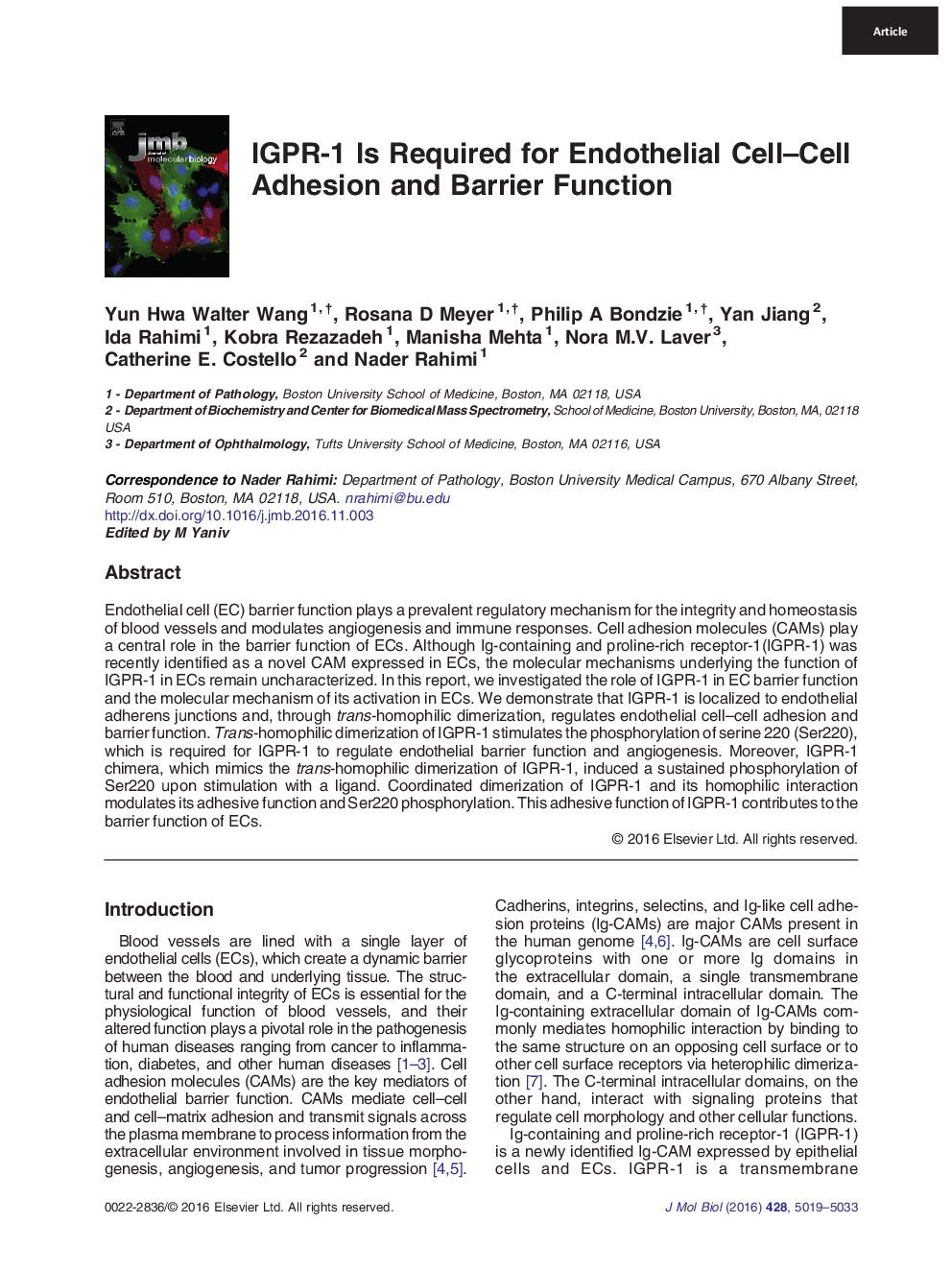| کد مقاله | کد نشریه | سال انتشار | مقاله انگلیسی | نسخه تمام متن |
|---|---|---|---|---|
| 5533317 | 1402114 | 2016 | 15 صفحه PDF | دانلود رایگان |

- Molecular mechanisms of endothelial cell-cell adhesion and barrier function are not fully understood.
- IGPR-1 is a novel CAM expressed in ECs and is localized to endothelial adherens junctions.
- IGPR-1through trans-homophilic dimerization regulates endothelial cell-cell adhesion and barrier.
- Trans-homophilic dimerization of IGPR-1 stimulates the phosphorylation of Ser220, which is required for IGPR-1 to stimulate endothelial barrier function and angiogenesis.
Endothelial cell (EC) barrier function plays a prevalent regulatory mechanism for the integrity and homeostasis of blood vessels and modulates angiogenesis and immune responses. Cell adhesion molecules (CAMs) play a central role in the barrier function of ECs. Although Ig-containing and proline-rich receptor-1(IGPR-1) was recently identified as a novel CAM expressed in ECs, the molecular mechanisms underlying the function of IGPR-1 in ECs remain uncharacterized. In this report, we investigated the role of IGPR-1 in EC barrier function and the molecular mechanism of its activation in ECs. We demonstrate that IGPR-1 is localized to endothelial adherens junctions and, through trans-homophilic dimerization, regulates endothelial cell-cell adhesion and barrier function. Trans-homophilic dimerization of IGPR-1 stimulates the phosphorylation of serine 220 (Ser220), which is required for IGPR-1 to regulate endothelial barrier function and angiogenesis. Moreover, IGPR-1 chimera, which mimics the trans-homophilic dimerization of IGPR-1, induced a sustained phosphorylation of Ser220 upon stimulation with a ligand. Coordinated dimerization of IGPR-1 and its homophilic interaction modulates its adhesive function and Ser220 phosphorylation. This adhesive function of IGPR-1 contributes to the barrier function of ECs.
Graphical Abstract208
Journal: Journal of Molecular Biology - Volume 428, Issue 24, Part B, 4 December 2016, Pages 5019-5033